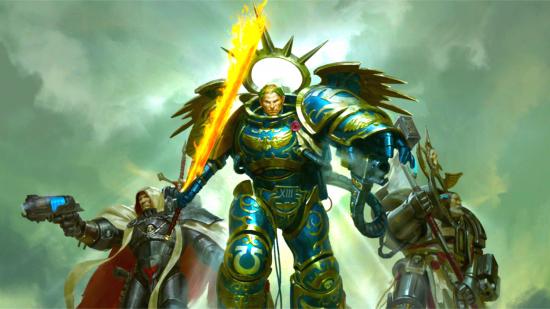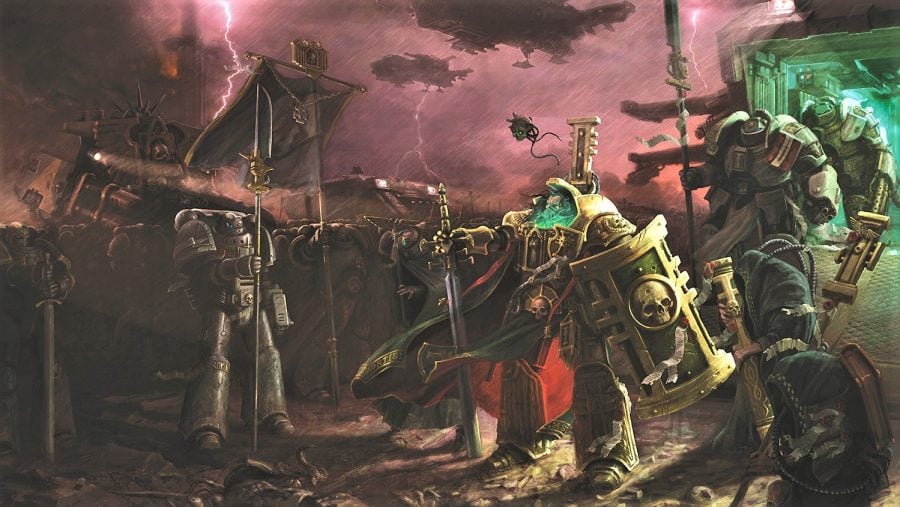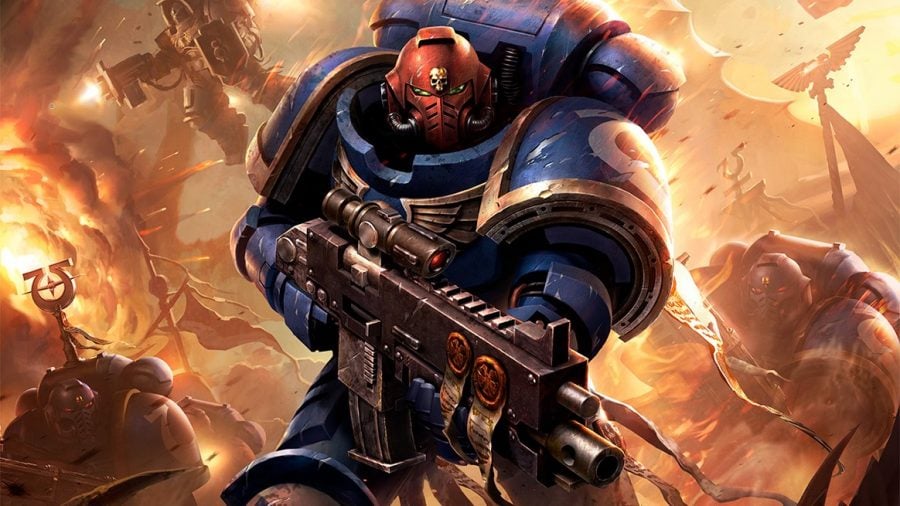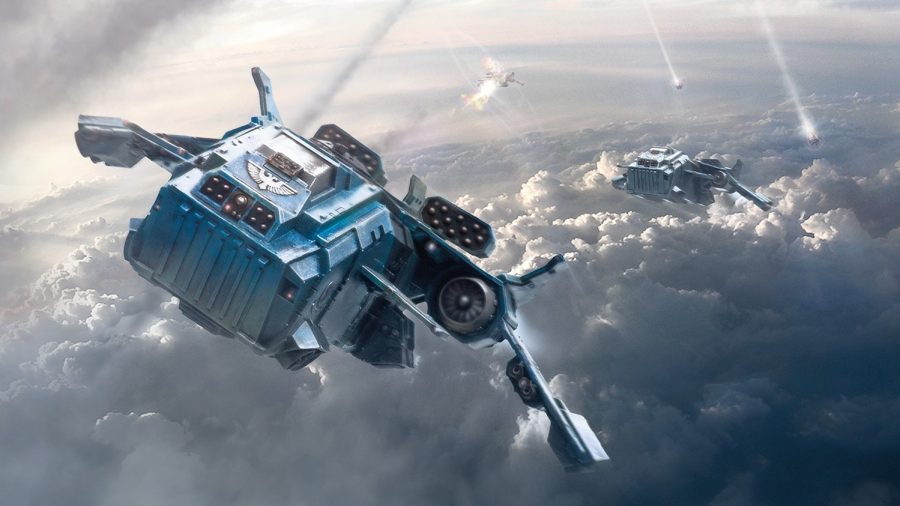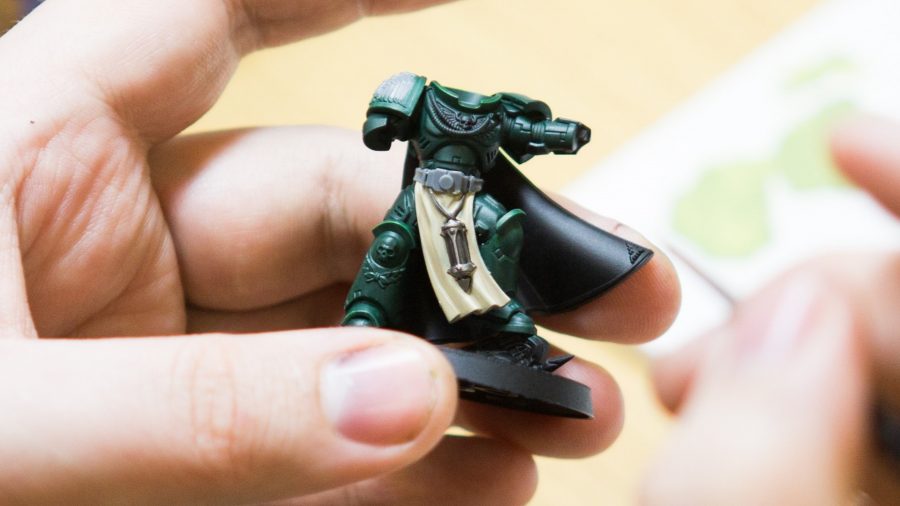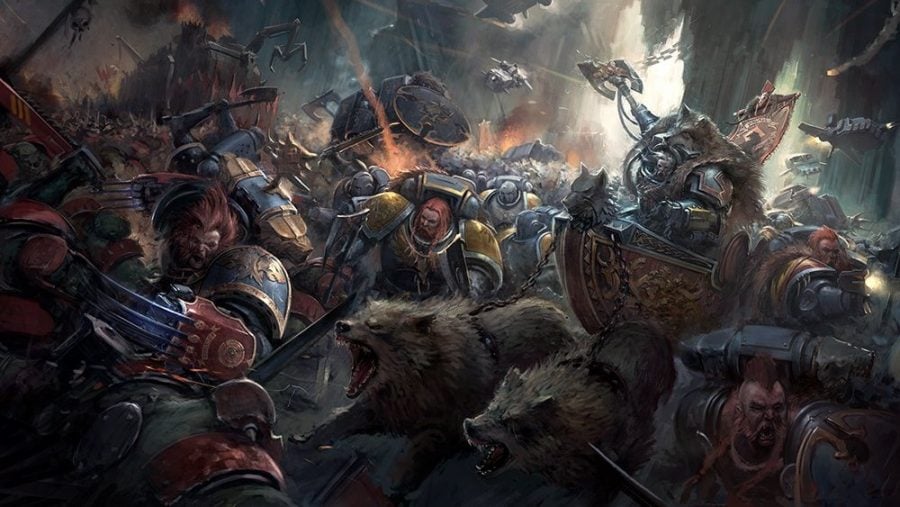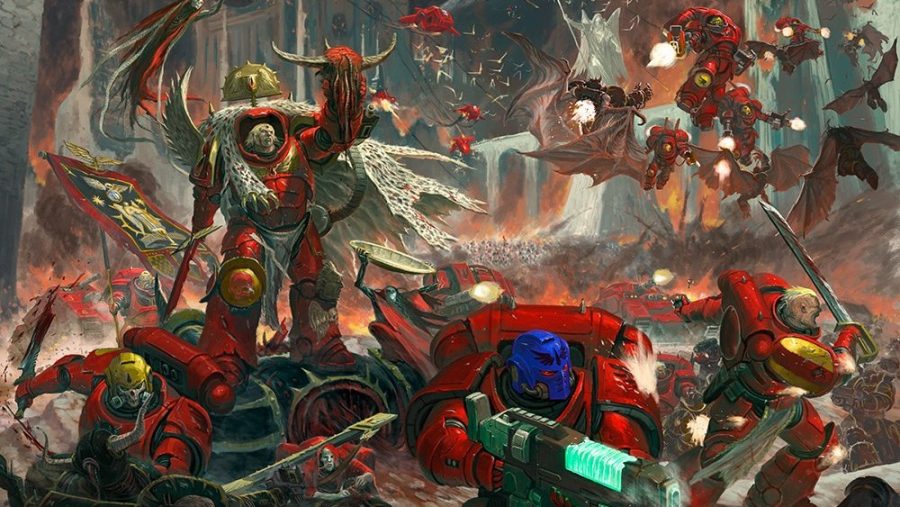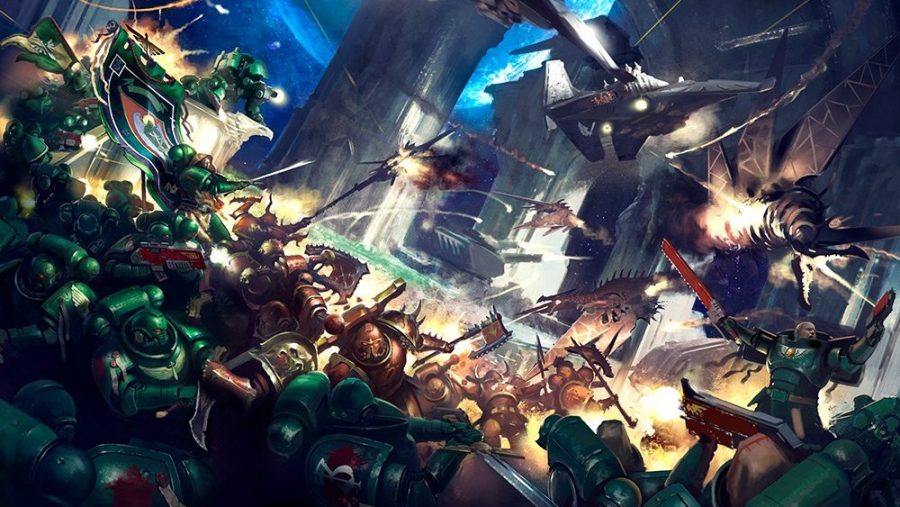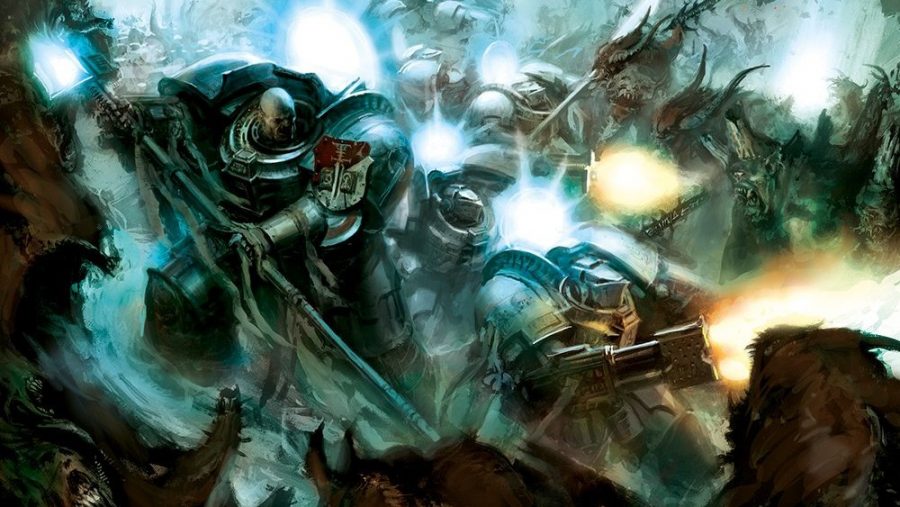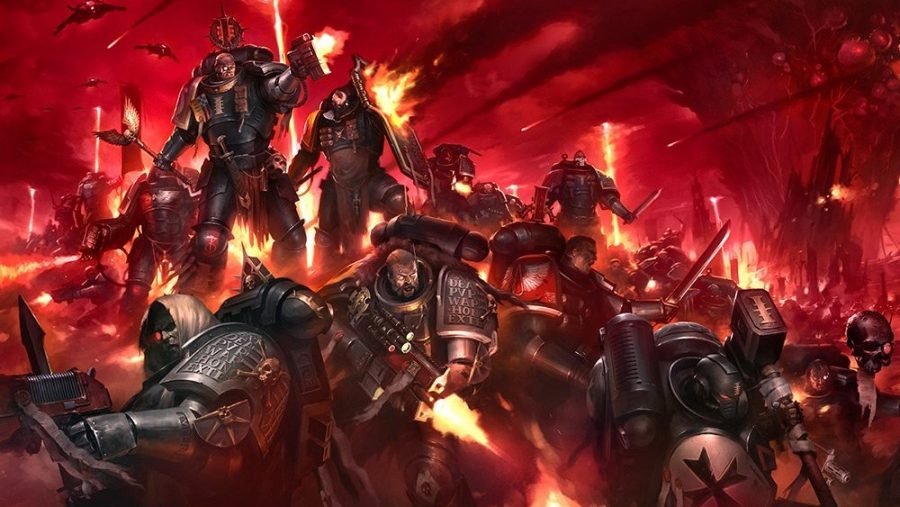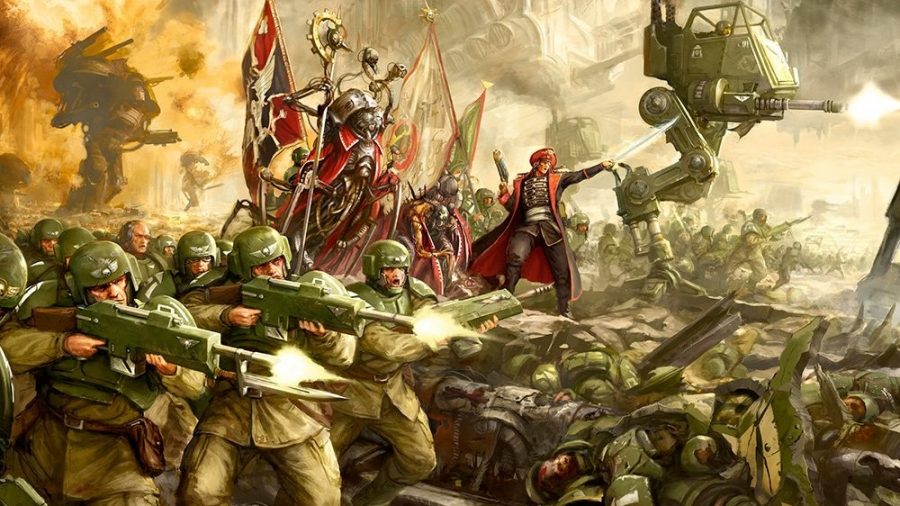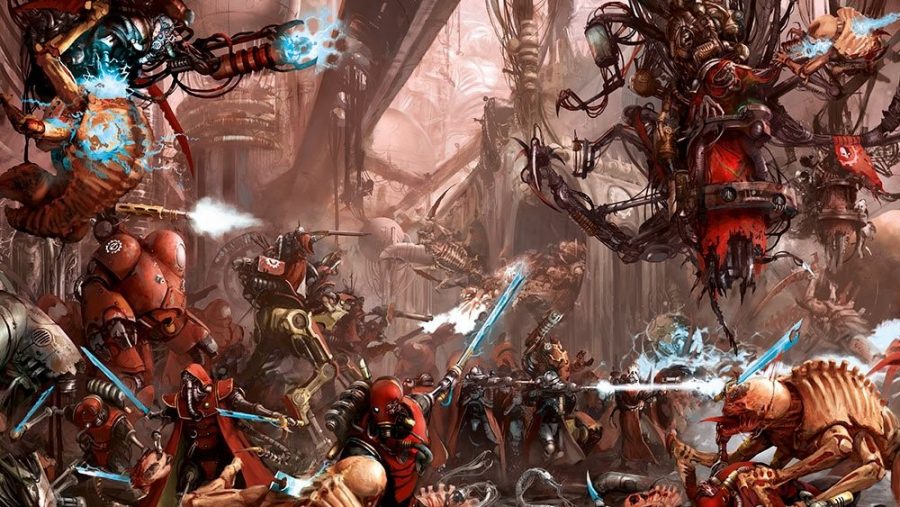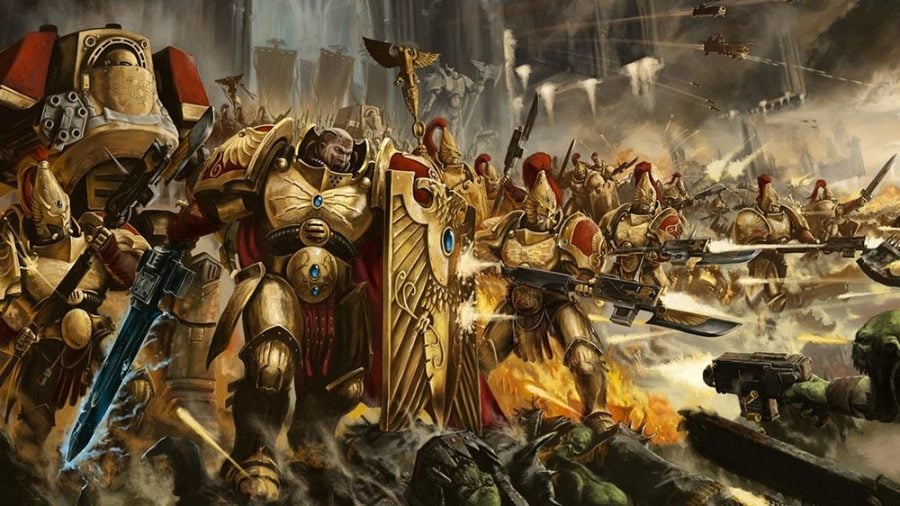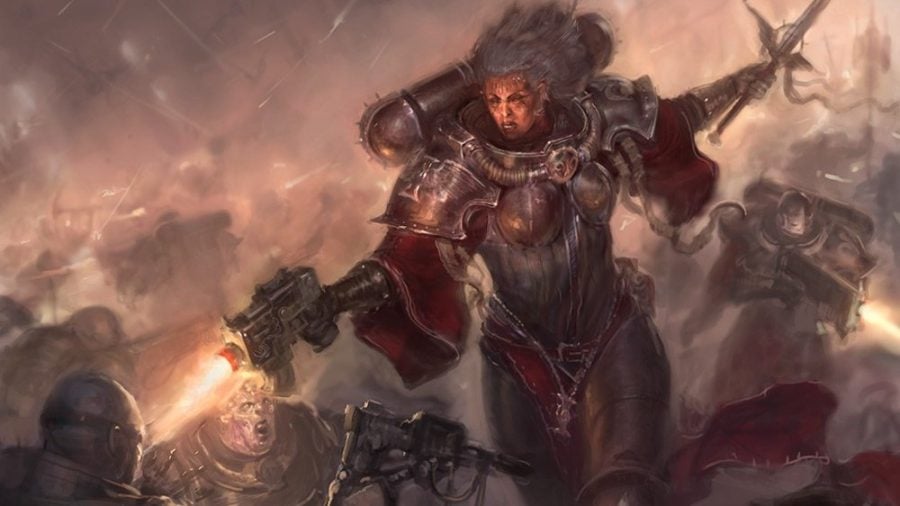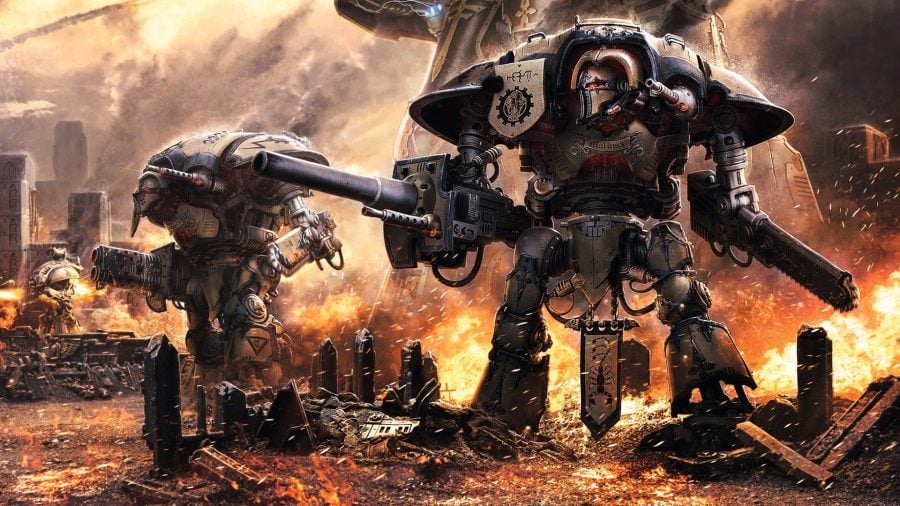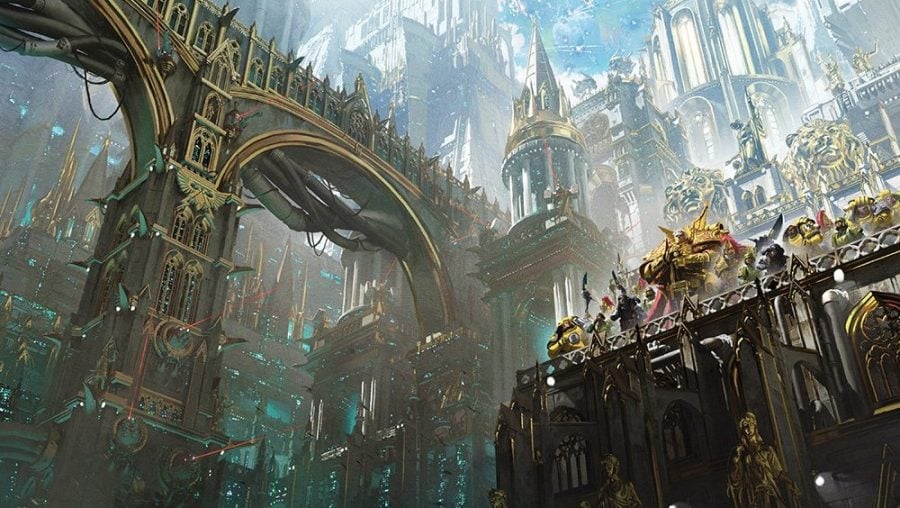The Warhammer 40k Imperium of Man is a vast, morally appalling totalitarian human empire that sits at the very core of Games Workshop’s gothic sci-fi setting. In the grim darkness of the far future, there is only war – this is one of 40k’s few fundamental laws – and boy, oh boy, what a big, horribly complicated war it can seem from the perspective of the beleaguered Imperium!
The borders of 40k have grown exponentially over the three decades since Games Workshop released its first edition of the game (then called Rogue Trader) in 1987 – and that huge library of lore can be a forbidding mountain to climb for new initiates to the game. Ask a 40k aficionado what 40k’s Imperium is, and they’ll likely laugh heartily at your fresh-faced naivete, before gratefully launching into a multi-hour lecture about politics, religion, and metaphysics. To save you that ordeal, we’re going to break it down to much more palatable chunks.
For a really simple overview of all the armies and races in the grimdark future, try our Warhammer 40k factions guide instead. Alternatively, delve into the Warp with our guide to Warhammer 40k Chaos armies, or study the galaxy’s fiercest aliens in our Warhammer 40k Xenos armies guide.
Still here, and still loyal to Him on Terra, the almighty Emperor of Mankind? Well then, time to take a walk around humanity’s galactic Imperium.
The main players in the Warhammer 40k Imperium are:
SPACE MARINES
You knew it had to start here. The power-armoured, gene-enhanced superhuman warriors of the Space Marines are most people’s first visual reference point in the universe of 40k, as they feature prominently in so much of the fiction and remain the most popular army to collect and play on the tabletop.
Created by the almighty, psychic Emperor of Mankind in the late 30th millennium to help him conquer Earth (or Terra, as it’s known in 40k), the eight-foot-tall Adeptus Astartes – are the deadliest human soldiers ever seen and (as you will often hear repeated) they know no fear.
Space Marines have the finest armaments available to humanity – including specialised tanks, aircraft, fast attack vehicles and their own fleets of spacefaring warships – and wield anything from the humble boltgun (a stubby rifle that fires coke-can-sized explosive slugs) to hulking laser cannons that would usually be mounted on tanks.
The new Primaris variants, introduced with the release of 40k’s 8th edition in 2017, are further-augmented versions with even snazzier weaponry. While they’re hardly a fascinating narrative shift in what Space Marines are all about, they have added a gorgeous new range of miniatures and some surprisingly interesting stories to the mix.
They were originally organised into 20 gigantic legions, each led by a supremely powerful ‘Primarch’ marine, grown directly from the Emperor’s own genetic material.
However, after these legions turned on one another in a cataclysmic civil war known as the Horus Heresy (more on this in the Chaos guide), they were mostly broken down into small ‘chapters’ of just 1000 marines each, to prevent any such schism among supersoldiers endangering the Imperium of Man again.
Space Marine chapters – of which there are many hundreds operating in the 41st millennium – each fight with their own heraldry, colours and symbols, and with many different ways of war, often reflected in their in-game special abilities, strengths and weaknesses. Painting your spiffy little spacemen in the colours of your chosen chapter before sending them to war is something of a 40k rite of passage, and one we can heartily recommend.
Space marines are cool. There’s no getting around it, they just are. There’s loads of variety between the different fictional cultures, philosophies and traditions represented within the different chapters and, though you may find yourself having to hold your nose through some very lazy cultural stereotypes, there’s a surprising amount of depth to be found in stories of the Space Marines.
Speaking of variety, we’d be remiss not to give a quick word on some of the more ‘divergent’ Space Marine chapters (though if we mentioned all of them we’d be here until the Dark Age of Technology). These marines do *not* follow the prescribed template of 1000 marines in neat rows, and have their own distinct characteristics and in-game rules that make them, in effect, standalone armies to collect.
Space Wolves
The Viking ones. Once known as the VI Legion Astartes, these guys now have many names – the Wolves of Fenris, the Vlka Fenryka, the Rout, the Sons of Russ, and many other titles, some less charitable than others. You’ll know them if you see them, though – the Space Wolves wear wintry greys, favouring a lot of runes, horns and animal pelts.
Following the example of their ferocious Primarch, Leman Russ, they join battle with the express intent of reaching their foe swiftly and tearing them to pieces – ideally with their teeth. Watch out for their psychic rune priests and at all costs avoid the fearsome, mutated Wulfen.
Blood Angels
The Italian renaissance-themed ones with the red armour. Originally the IX Legion, led by the dashing, clairvoyant Primarch Sanguinius (RIP), the Blood Angels can be identified by their blood-drop insignia, gorgeously embellished red and gold armour, wan, melodramatic demeanour and semi-veiled references to blood-drinking rituals (those armour embellishments feature an awful lot of goblets filled with red stuff).
True to their name, Blood Angels favour swooping down on enemies with jump packs, before carving them up with elegant, well-drilled sword, fist and axe strikes. Occasionally, a genetic fault will cause a Blood Angel to enter a psychotic, grief-fueled ‘black rage’, at which point they join the dreaded Death Company, making them a terrifying combatant, but a real downer at parties.
Dark Angels
The green-armoured, knightly-looking ones. The Dark Angels were once the I Legion Astartes, raised as a semi-monastic, knightly order among the continent-spanning, monster-infested forests of Caliban and led by the heroic Primarch Lion El’Johnson (yes, that’s really his name and no, don’t ask us why).
The chapter in the time of 40k is defined by its infamous fall from grace 10 millennia earlier: part of the Legion turned to Chaos during the Horus Heresy and became the ‘Fallen’ – a source of such shame for the loyalists who remained that they now call themselves ‘The Unforgiven’, a mark of their quest to prove their undying loyalty.
In a sci-fi homage to medieval warfare, the Dark Angels overwhelm their foes by barraging them with ranged firepower, while simultaneously harrying key targets with fast-moving Ravenwing motorbike cavalry, and smashing holes in the frontline with wrecking-ball squads of heavily armoured Deathwing knights.
Want to join the Inner Circle of the Sons of the Lion? Read up on their lore, tactics, codex, and more in our Warhammer 40k Dark Angels army guide.
Grey Knights
The Grey Knights are a secretive chapter of specially-bred psychic space marines based in a secret fortress on Titan, the largest moon of Saturn. Technically part of the Imperial Inquisition (a quasi-religious shadow faction that’s roughly one part Homeland Security, one part Hitler’s SS and three parts sexy Jacobean outfits), these guys are tasked with stamping out incursions by the daemons of the warp (more on them later, too).
On the tabletop, their top-tier melee weapons and psychic abilities make Grey Knights an elite force – meaning that, in the average balanced game, you’ll have only a few models on the field compared to your opponent, so you really have to make them count. They can be a challenge, but feel incredibly powerful in their own way and are a joy to paint.
For a full tactical readout on the ultra-secretive Knights of Titan, check out our comprehensive Warhammer 40k Grey Knights guide.
Deathwatch
If the Grey Knights are the daemon-hunting special forces, the Deathwatch are the equivalent for hunting down aliens (or xenos, in 40k terms). Recruited from the ‘best of the best’ among the regular chapters, Deathwatch marines are allowed to keep one shoulder-guard showing their original insignia, but swap their old armour for plain black and their other shoulder for a neat silver one.
Deployed in hand-picked ‘kill-teams’ and equipped with uniquely modified anti-xenos weapons, munitions, armour and vehicles, the Deathwatch also play as an ‘elite’ army whose potent special abilities have to be carefully managed to maximum effect. However, their competitive power and the inherent potential for heavy customisation of your badass special ops marines make Deathwatch a very popular choice.
If you’re keen to shed your chapter colours and join the elite killers of the Ordo Xenos, get clued up with our Warhammer 40k Deathwatch guide.
Astra Militarum
The poor, sad-looking ordinary soldiers huddled around WW1-style tanks. Mighty though the Space Marines are, there simply aren’t enough of them to hold the million worlds laid claim to by the Emperor of mankind. For that, you need the Guard. Humanity’s first line of defence in any war, the Astra Militarum is made up of trillions of non-genetically-enhanced base-line humans, ‘recruited’ from loyal imperial worlds across the galaxy. Many of GW’s Guard-related artworks (including the one above) depict the classic Cadian Shock Troops, though there are many thousands of regiments from across the galaxy, with different uniforms, gear, and ways of war.
Your basic ‘guardsman’ (an imperfect term, as gender is utterly immaterial in Guard recruitment) is given only rudimentary training. As quickly as the paperwork allows, they’re issued with a uniform, a copy of the Imperial Infantryman’s Uplifting Primer, and a lasgun (nicknamed the ‘flashlight’ for its paltry stopping power), and pushed off to fight the many enemies of humanity.
Luckily, they’re supported by legions of mass-produced tanks, aircraft and other war machines from humanity’s many factory planets. But that stuff is expensive and bodies are cheap and plentiful, so much of Imperial Guard strategy boils down to pretty horrendous, meat-grinder stuff. If you’re going to play them on the tabletop, get ready to paint hundreds of near-identical soldiers, and bring a dustpan and brush to clear away the casualties.
Ready to take the Emperor’s Shilling and join your local regiment? Check out our full Warhammer 40k Astra Militarum guide to learn more.
Adeptus Mechanicus
The red-robed, metal-limbed spindly folks with the eerie, War-of-the-Worlds-esque steampunk aesthetic. The Adeptus Mechanicus (or AdMech for short) are a human-cyborg faction born of ancient, technology-worshipping cults native to Mars, who long ago struck an alliance with the Emperor and joined the Imperium of Man.
In their religion, every machine – down to the most rudimentary cog-driven system – has its own supernatural ‘machine spirit’ which must be appeased for the thing to work properly.
The AdMech’s ruling class of revered ‘tech-priests’ tend to seek communion with such spirits via solemn chanting, the application of holy oils and unguents, and progressively replacing their own body parts with ‘augmetic’ substitutes until they look like Doctor Octopus and their footsteps sound like sackfuls of pennies thrown in a woodchipper.
On the tabletop, their half-robotic foot-soldiers tend to hang back and fire off fusillades of laser and radioactive shots, while letting their high-tech martian war machines do the dirty work with some of the game’s most destructive heavy weapons. Recommended for anyone that likes listening to Jeff Wayne’s War of the Worlds on repeat.
If you’re already itching to replace your puny organic parts with the cold, calculated precision of the machine, then jump right into our Warhammer 40k Adeptus Mechanicus army guide.
Adeptus Custodes
The big shiny gold space marines with the winged helmets, and spears with guns on. The Adeptus Custodes are the Emperor’s personal bodyguards, the elite of the elite among Space Marines.
Crafted from a genetic recipe closer to the Emperor’s own essence than any of his other experiments (save perhaps the Primarchs), each Custodian towers over a normal or even Primaris Space Marine, and their preternatural combat abilities far surpass any of the lesser Astartes.
On the tabletop, Custodes are perhaps the most ‘elite’ army available – save perhaps Imperial Knights – and in most games you will be able to field just a few of these gold-clad giants. However, their unmatched resilience under fire and extremely powerful unique abilities make them satisfying to command and an in-game force to be reckoned with.
OK, so you want to encase yourself in auramite and become one of the Emperor’s ultra-elite; time to dig into our comprehensive Warhammer 40k Adeptus Custodes army guide.
Sisters of Battle / Adepta Sororitas
The power-armoured battle nuns that 40k can always point towards to avoid the sticky question of why there aren’t any female Space Marines . The Ecclesiarchy (the hideously wealthy galacto-church in charge of humanity’s state religion of Emperor-worship) was long ago forbidden to maintain a force of men under arms. So, in a hilarious twist, it raised its own private army of female super-soldiers instead.
Clad in voluptuously-cut ladies power armour, covered in more fleur-de-lis decorations than you can shake a power sword at, the Sisters of Battle are incredibly cool, even if their eyeshadow, boob armour and battle cleavage is still (even after a redesign) a reminder that Warhammer still has one foot in the bad old days of making toys primarily to titillate male gazes.
Games Workshop released a whole new range of plastic Sisters of Battle miniatures in late 2019, making this army one of the newest, best-engineered collections of models in the game, featuring some of the finest sculpts the firm has ever produced.
In-game, it takes a practised strategic and tactical hand to get the most out of their potential, as the Sisters’ greatest strength comes from combining key characters’ aura abilities, layering buff effects, and making canny use of their Acts of Faith and Miracle Dice mechanics. But if you can put in the time, they’re a highly rewarding army to play.
Feeling holy enough yet to start your own Order and draw blood for the Emperor? Get clued in with our full Warhammer 40k Sisters of Battle army guide.
Imperial Knights
Yep, the Imperial Knights are walkers – but these are not your common-or-garden mech-warriors. Like most mechanical things in 40k’s human empire, these magnificent war machines were built eons ago using long-lost technology, and once they’re gone, they’re gone. As such, they are owned and operated by the scions of ancient aristocratic ‘knightly’ households, which come complete with colourful european-style heraldry, mottoes and the inevitable genetic pitfalls of generational inbreeding.
Still, there is very little in sci-fi quite as glorious as a charging lance of Imperial Knights, their hulking arm-cannons training on the enemy as their noble pennants flutter wildly in their colossal wake. A Knight is perhaps the intermediate painter’s go-to choice for a ‘big centrepiece model’, its broad shoulder-plates and and armour panels providing loads of opportunity for personalisation and flair.
While each of these chonky models is pricey – the cheapest full-size Knight retails at £95 – it’s worth considering that a full, competitive army of Knights could consist of just three models, somewhat counterintuitively making it one of the less financially costly armies to collect. Taking into account the army’s relative strategic simplicity (move your massive robots forward and shoot stuff), Knights are actually one of the best 40k armies for beginners.
Want to climb your Throne Mechanicum and start collecting these pseudo-chivalric behemoths? Check out our in-depth Warhammer 40k Imperial Knights army guide.
These are the main, truly playable 40k armies under the banner of the Imperium of Man. There are a few other important groups – such as the Inquisition proper, the Officio Assasinorum, Sisters of Silence and legions of Warhammer Titans – for which you can collect models and include them in your Imperium tabletop army, not to mention countless other minor players. But, for now, farewell – and walk in the light of the God-Emperor.
